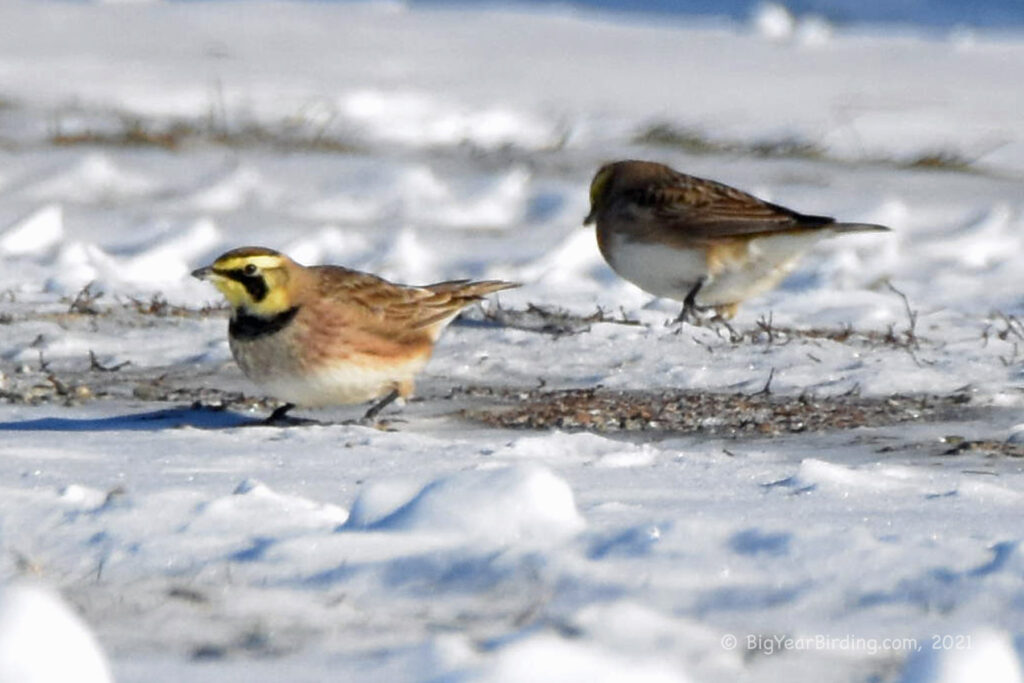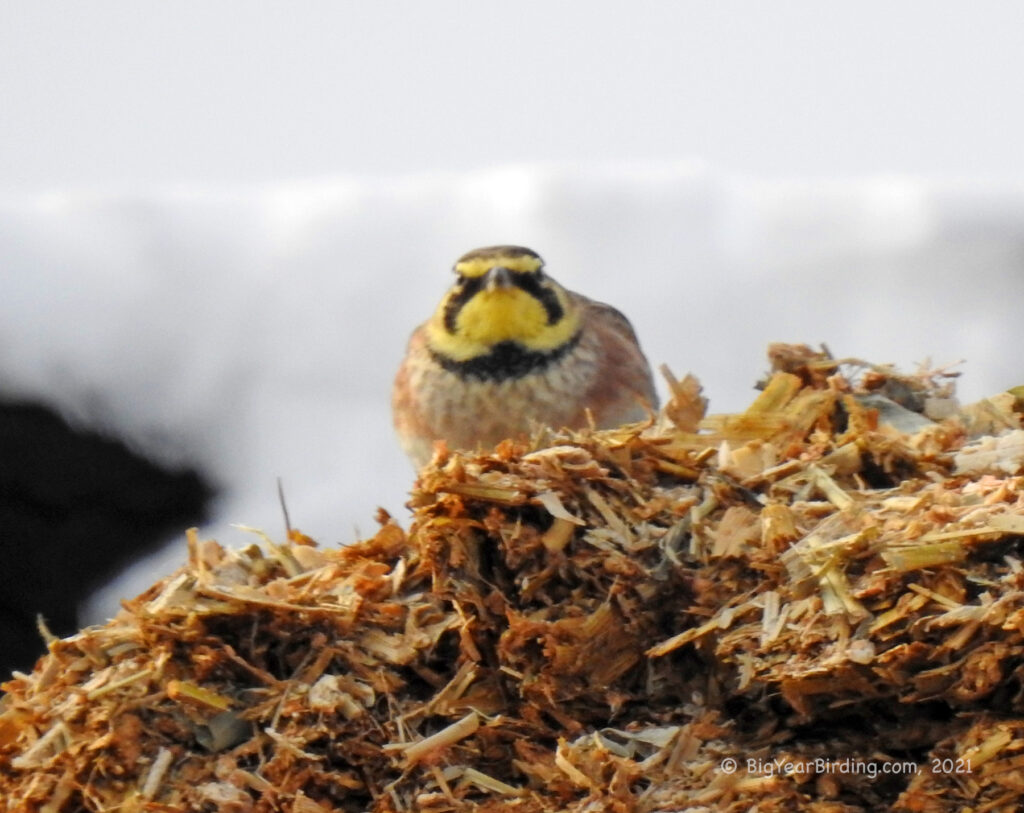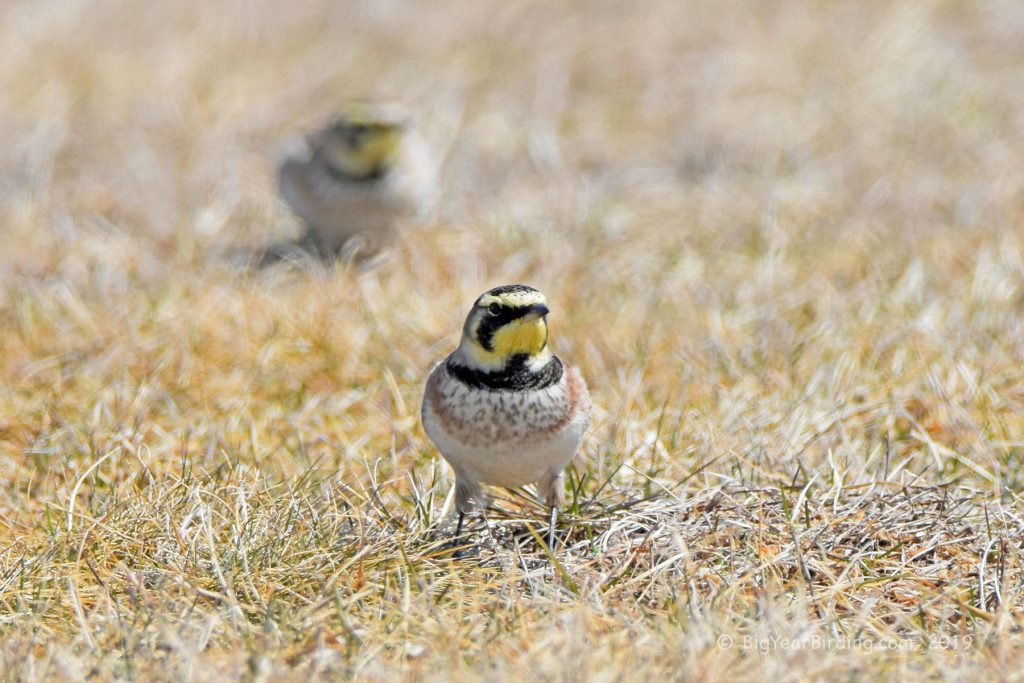The Horned Lark (Eremophila alpestris) is a small passerine bird that inhabits open grassy areas, fields, and prairies throughout North America, Europe, and Asia. They are roughly 6-7 inches long with a wingspan of about 12-13 inches, and weigh between 1-2 ounces. The male and female have similar markings, with a brownish-gray back, a black face mask, and a white belly. However, the male can be distinguished by a small black “horn” of feathers on its head.
One of the most distinctive features of the Horned Lark is its tail, which is black with white tips, and often flicks as the bird flies. They have a short, conical bill and a stout body, allowing them to survive in colder climates. During the breeding season, the male will also have a black breastband that helps distinguish it from the female.
The Horned Lark is a migratory bird, and its movements vary depending on the subspecies and the region. In North America, the breeding population of Horned Larks generally resides in Canada and Alaska, while the non-breeding population can be found throughout the United States, Mexico, and Central America. The Eurasian subspecies breeds in northern Europe and Asia, with non-breeding populations throughout the region. Some subspecies of Horned Larks are non-migratory and reside in their breeding territories year-round.
During migration, Horned Larks often form large flocks and can be found in a variety of habitats, including agricultural fields, coastal areas, and grasslands. They feed on seeds, insects, and small invertebrates, often foraging on the ground or in low vegetation. Their preferred habitat is dry, open areas, including deserts and tundra.

Overall, the Horned Lark is a hardy and adaptable bird, able to thrive in a variety of climates and habitats. Its distinctive markings, unique tail, and small head “horn” make it a fascinating species to observe in the wild.


